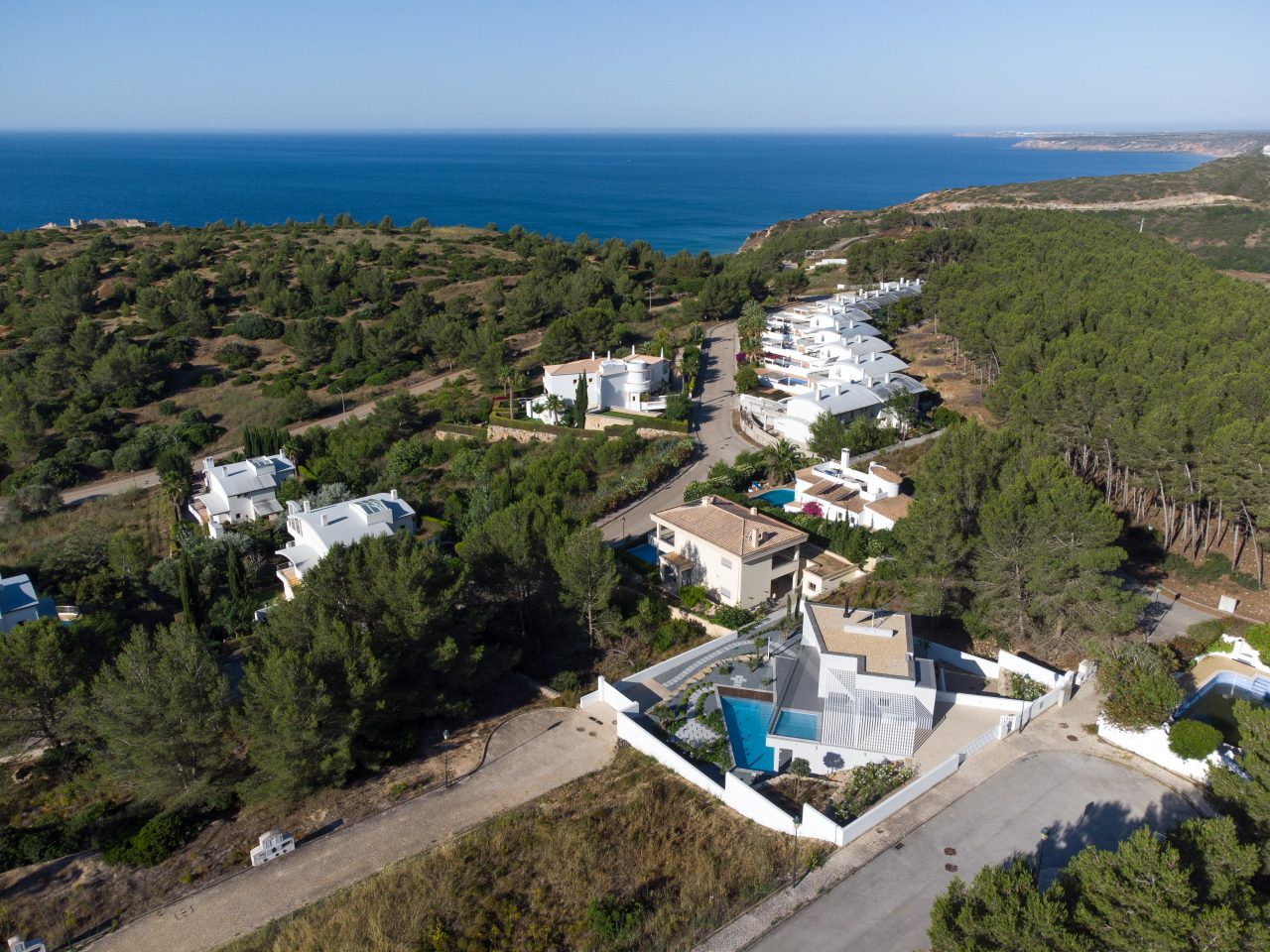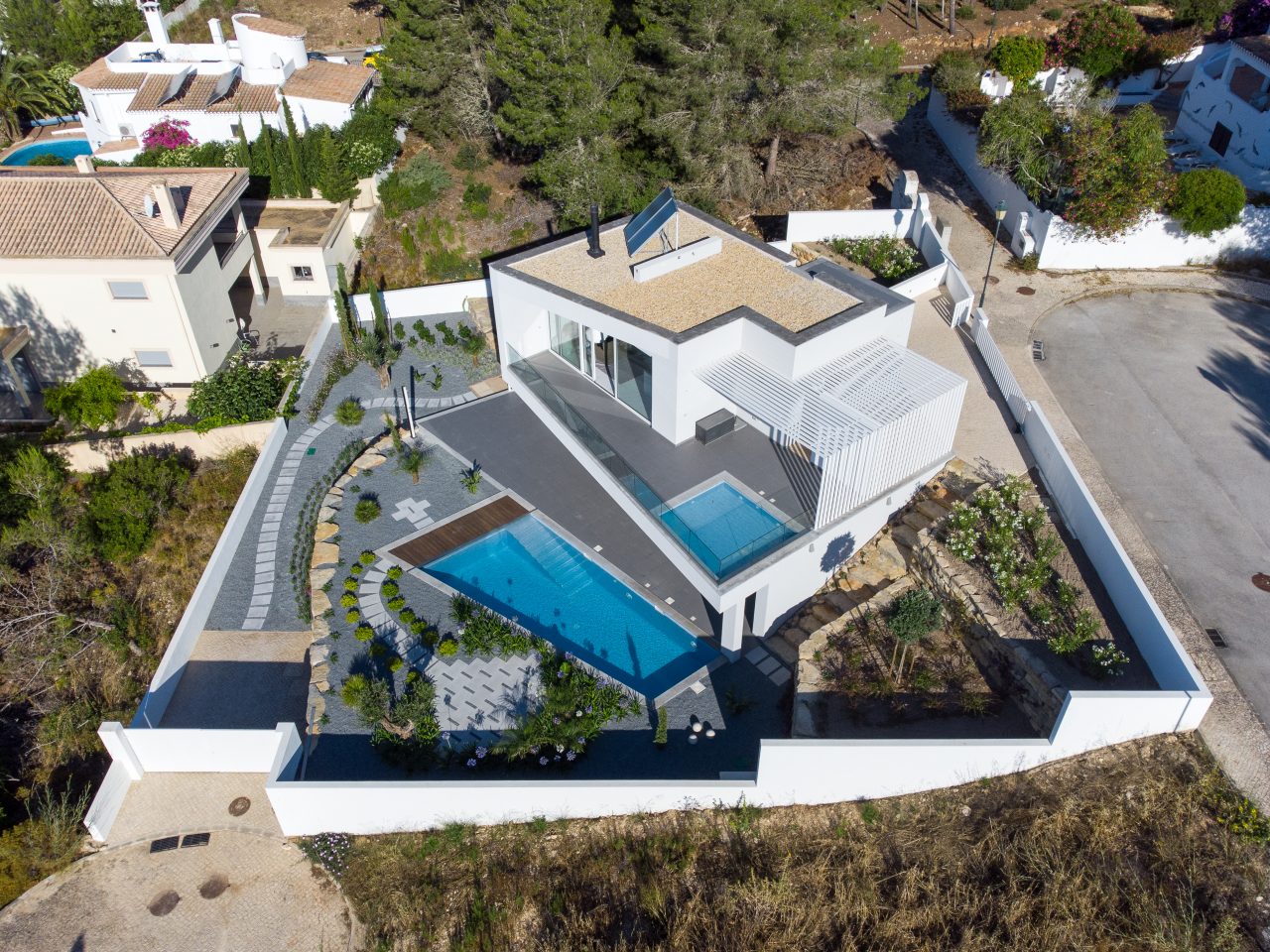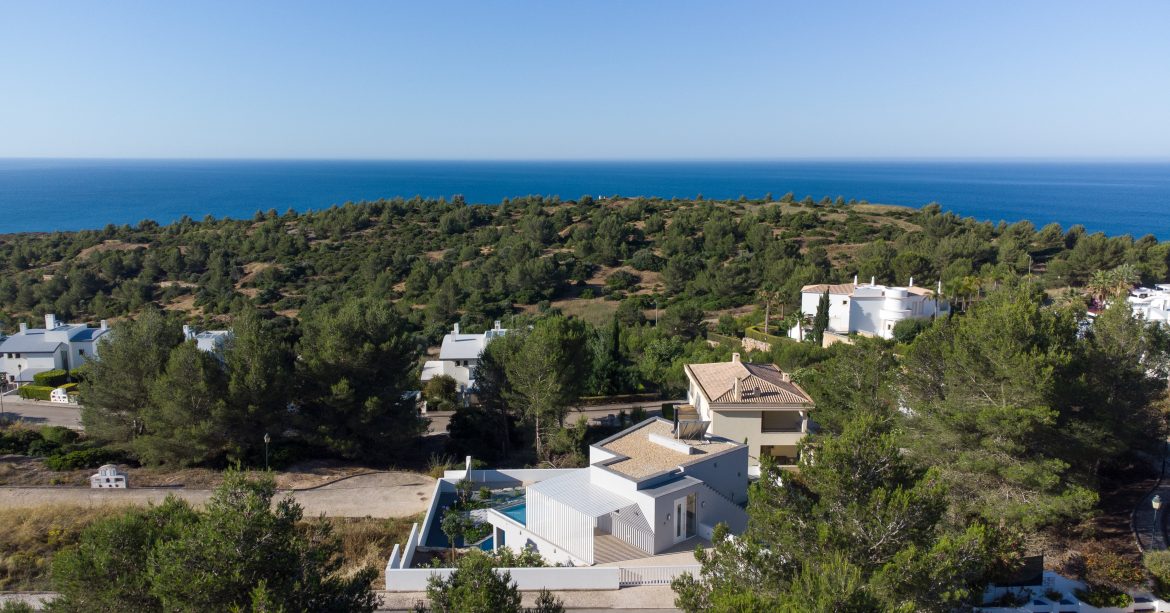No, no. Not by ripping bits off and whisking them away. We mean (literally!) getting the lay of the land before you start building, taking in everything about it – the good, the bad, and the windy, and designing your house to work with the elements, not against them. So that you’re allowing the sun in to warm you when you want it, and you’re benefitting from 100% natural AC when it suits you best… but how?
With a Bioclimactic Survey, for starters
Let’s take Villa RH, for example, as the house’s positioning means it’s able to maximise the sun and wind exposure necessary to reach zero energy status, using one simple trick:
Placing the house at an angle to its hill.
Essential to maximising its energy performance (while also giving it head-on ocean views), positioning the house differently from all the others on its street was the secret to it all, allowing it to face the sun while its terraces face away from it, effectively managing the heating of the house. Wall-length, south-facing windows and a west-facing bedroom catch the morning sun and measure the light coming in, but what about the wind?
The secret is in rotating terraces and shades, protecting against dominant winds, which mostly come from the North in this area. As such, positioning physical barriers northwards, while allowing for gentler, warmer southerly breezes to waft through the property thanks to that long line of windows means wind is truly harnessed in all the best ways. Clever, right? So let’s take a look at the main principles applied, which can be used to do the same in any residence:

Letting in breezes, keeping out wind
Unsurprisingly when it comes to wind ventilation, the key lies entirely in how you position your windows. Summer breezes provide pleasant ventilation, and creating airflow paths can help vent even houses with the smallest footprints. You’ll want to work out where they come from so that you can let them in while blocking off directions that bring cold gales and chilly blasts.
Working with two storeys? How about creating central “stack” ventilation between the floors, topped with a skylight for a full flow? Or even a windcatcher, if you want to take a more middle-eastern approach.
These are all principles of passive cooling, which work with far more than just your house. In fact, the surroundings are just as important, or how else will you block out unwanted winter draughts?
Be clever. Use the vegetation the land gives you. Don’t cut down trees that block stronger winds – let them do their thing and protect your home. But worry not if there’s not much brush around – you can certainly plant trees and give them time to reach their full potential, and while you’re waiting, use awnings, terraces, and fences to block out icy blasts.
You can even plant hedges to channel the wind exactly where you want it to go, directing it either towards or away from your house, depending on the effect you’re after.
When it comes to harnessing the power of nature, there’s certainly no “one size fits all” solution, and even one size that may fit for a while may not apply year-round. Why? Because wind changes with the seasons – something certainly worth considering when you’re trying to harness it.

Passive cooling for reduced bills…
Beyond increasing your comfort and working alongside, rather than against, the elements, passive cooling is a key to a zero-energy home: a house that heats and cools itself. As good for your bank balance as it is for the environment, passive cooling relies on a few other elements to get the full effect:
- Airtight windows and doors, so that you can really block out draughts when you want to.
- Treated glass in your windows to let sunlight in without the heat coming with it.
- Insulation – in the roof, walls, and floor. Ever heard of clay bricks? They’re great for retaining heat, and it’ll come as no surprise that the natural material works well in, well, nature… it’s a great insulator!
Building with and within nature brings reduced bills…
… and even more benefits
We’re talking increased resilience of your home, as it’s not trying to stand firm against the elements – it’s part of its surrounding ecosystem, working harmoniously with everything around it in a flow and balance conducive to longevity. And then there’s the reduced maintenance, for precisely the same reason.
So there you have it: the benefits of building with and within nature, all based on the wind!


